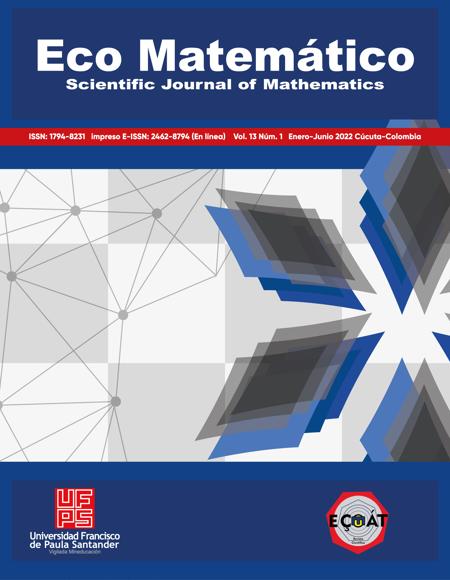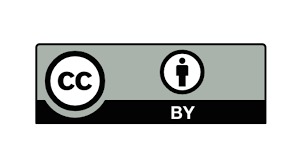Preliminary Identification of Skin Lesions using Efficient Computational Learning Techniques
Identificación preliminar de lesiones cutáneas mediante técnicas de aprendizaje computacional eficientes
Main Article Content
Machine learning (ML) is one of the fields of artificial intelligence that offers algorithms to
predict from samples the effective detection of skin lesions caused by skin cancer. This paper presents the
preliminary identification of skin lesions using optimized algorithms for texture feature extraction by
GLCM and feature-based learning (LightGBM, SVM and HAAR Cascade) as an initial stage for a
diagnostic tool. The HAM10000 skin lesion image set, Python programming language and open sourcebased libraries are used to process the images, extract the features and train the learning models, determine
the performance and hit rate of the models. Based on the results obtained, the LightGBM classifier required
the shortest learning time, reduced CPU usage and 90 % accuracy rate
Downloads
Article Details
E. R. Parker, “The influence of climate change on skin cancer incidence – A review
of the evidence,” Int. J. Women’s Dermatology, vol. 7, no. 1, pp. 17–27, Jan. 2021,
doi: 10.1016/J.IJWD.2020.07.003. DOI: https://doi.org/10.1016/j.ijwd.2020.07.003
C. Magalhaes, J. M. R. S. Tavares, J. Mendes, and R. Vardasca, “Comparison of
machine learning strategies for infrared thermography of skin cancer,” Biomed.
Signal Process. Control, vol. 69, pp. 1–10, Aug. 2021, doi: DOI: https://doi.org/10.1109/TSP.2021.3136798
1016/j.bspc.2021.102872.
T. G. Chandra, A. M. T. Nasution, and I. C. Setiadi, “Melanoma and nevus
classification based on asymmetry, border, color, and GLCM texture parameters
using deep learning algorithm,” in AIP Conference Proceedings, Dec. 2019, vol.
, no. 1, pp. 1–6, doi: 10.1063/1.5139389. DOI: https://doi.org/10.1063/1.5139389
S. A. A. Ahmed, B. Yanikoglu, O. Goksu, and E. Aptoula, “Skin Lesion
Classification with Deep CNN Ensembles,” 2020 28th Signal Process. Commun.
Appl. Conf. SIU 2020 - Proc., Oct. 2020, doi: 10.1109/SIU49456.2020.9302125. DOI: https://doi.org/10.1109/SIU49456.2020.9302125
E. Almansour and M. Arfan Jaffar, “Classification of Dermoscopic Skin Cancer
Images Using Color and Hybrid Texture Features,” IJCSNS Int. J. Comput. Sci.
Netw. Secur., vol. 16, no. 4, 2016.
S. Afifi, H. Gholamhosseini, and R. Sinha, “SVM classifier on chip for melanoma
detection,” Proc. Annu. Int. Conf. IEEE Eng. Med. Biol. Soc. EMBS, pp. 270–274,
Sep. 2017, doi: 10.1109/EMBC.2017.8036814. DOI: https://doi.org/10.1109/EMBC.2017.8036814
X. Li, J. Wu, H. Jiang, E. Z. Chen, X. Dong, and R. Rong, “Skin Lesion
Classification Via Combining Deep Learning Features and Clinical Criteria
Representations,” bioRxiv, pp. 1–7, Aug. 2018, doi: 10.1101/382010. DOI: https://doi.org/10.1101/382010
K. Padmavathi and K. Thangadurai, “Implementation of RGB and Grayscale
Images in Plant Leaves Disease Detection – Comparative Study,” Indian J. Sci.
Technol., vol. 9, no. 6, pp. 1–6, Feb. 2016, doi: 10.17485/IJST/2016/V9I6/77739. DOI: https://doi.org/10.17485/ijst/2016/v9i6/77739
M. Kumar, M. Alshehri, R. AlGhamdi, P. Sharma, and V. Deep, “A DE-ANN
Inspired Skin Cancer Detection Approach Using Fuzzy C-Means Clustering,”
Mob. Networks Appl. 2020 254, vol. 25, no. 4, pp. 1319–1329, Jun. 2020, doi: DOI: https://doi.org/10.1007/s11036-020-01550-2
1007/S11036-020-01550-2.
A. M. Gajbar and A. . Deshpande, “GLCM and Multiclass Support Vector
Machine Based Automatic Detection and Analysis of Types of Cancer and Skin
Allergy,” Int. J. Adv. Res. Electron. Commun. Eng., vol. 4, no. 5, pp. 1477–1488,
J. Díaz Ríos, J. J. Payá Martínez, and M. E. Del Baño Aldedo, “El análisis textural
mediante las matrices de co-ocurrencia (GLCM) sobre la imagen ecográfica del
tendón rotuliano es de utilidad para la detección de cambios histológicos tras un
entrenamiento con plataforma de vibración,” Cult. Cienc. y Deport., vol. 4, no. 11,
pp. 91–102, 2009, Accessed: Jan. 20, 2022. [Online]. Available:
https://dialnet.unirioja.es/servlet/articulo?codigo=3097046&info=resumen&idio
ma=ENG.
J. Zhang, D. Mucs, U. Norinder, and F. Svensson, “LightGBM: An Effective and
Scalable Algorithm for Prediction of Chemical Toxicity-Application to the Tox21
and Mutagenicity Data Sets,” J. Chem. Inf. Model., pp. 1–9, 2019, doi:
1021/ACS.JCIM.9B00633/SUPPL_FILE/CI9B00633_SI_001.PDF.
C. Chen, Q. Zhang, Q. Ma, and B. Yu, “LightGBM-PPI: Predicting protein-protein
interactions through LightGBM with multi-information fusion,” Chemom. Intell.
Lab. Syst., vol. 191, pp. 54–64, Aug. 2019, doi:
1016/J.CHEMOLAB.2019.06.003. DOI: https://doi.org/10.1088/1475-7516/2019/06/003
M. Lingaraj, A. Senthilkumar, and J. Ramkumar, “Prediction of Melanoma Skin
Cancer Using Veritable Support Vector Machine,” Ann. Rom. Soc. Cell Biol., vol.
, pp. 2623 – 2636, Apr. 2021, Accessed: Dec. 14, 2021. [Online]. Available:
https://www.annalsofrscb.ro/index.php/journal/article/view/2800.
J. Cervantes, F. Garcia-Lamont, L. Rodríguez-Mazahua, and A. Lopez, “A
comprehensive survey on support vector machine classification: Applications,
challenges and trends,” Neurocomputing, vol. 408, pp. 189–215, Sep. 2020, doi: DOI: https://doi.org/10.1016/j.neucom.2019.10.118
1016/J.NEUCOM.2019.10.118.
P. Srinivasan and V. Srinivasna, “A Comprehensive Diagnostic Tool for Skin
Cancer Using a Multifaceted Computer Vision Approach,” 7th Int. Conf. Soft
Comput. Mach. Intell. ISCMI 2020, pp. 213–217, Nov. 2020, doi:
1109/ISCMI51676.2020.9311557.
P. Tschandl, C. Rosendahl, and H. Kittler, “The HAM10000 dataset, a large
collection of multi-source dermatoscopic images of common pigmented skin
lesions,” Sci. Data 2018 51, vol. 5, no. 1, pp. 1–9, Aug. 2018, doi:
1038/sdata.2018.161.







